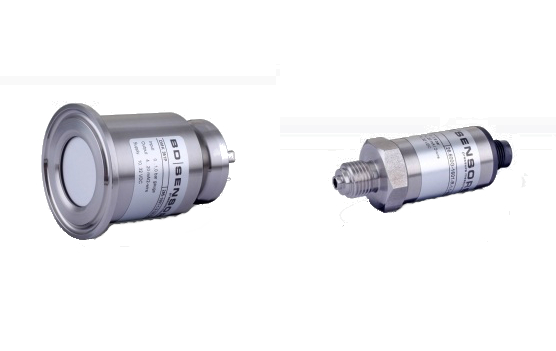- What is a pressure sensor?

Define:
A pressure sensor is an electronic device that converts a pressure signal to an electrical signal, typically used for pressure measurement or pressure related applications.
Working principle:
The principle of operation of the pressure sensor is similar to that of other sensors as it requires a source of pressure (gas, vapor, liquid) to act on the sensor, the sensor returns the value to the microprocessor. signal and then output the signal.
The structure consists of 2 main parts:
Sensor: is the part that receives the signal from the pressure and transmits the signal to the processing block. Depending on the type of sensor, it converts from a mechanical signal of pressure to a signal of resistance, capacitance, inductance, current … on the processing block.
Processing block: has the function of receiving signals from the sensor block, performing processing to convert those signals into standard signals in the field of pressure measurement such as 4 ~ 20 mA voltage output signal. (most commonly used signal) , 0 ~ 5 VDC, 0 ~ 10 VDC, 1 ~ 5 VDC
Depending on the type of sensor, the way it works is also different, there are types of operations based on material deformation to change resistance, types of changing capacitance, types of using piezoelectric materials, in which piezoresistive and capacitive types are most commonly used.
Some common types of pressure sensors
Resistive pressure sensor:
Sensor structure: consists of a membrane that is very sensitive to pressure, implanted on resistive elements.
Working principle: When there is a pressure force on the membrane, the membrane will be deformed, the resistance will also change depending on the curvature of the membrane. Specifically, the value of resistors parallel to the membrane edge decreases, the value of the resistors perpendicular to the membrane edge increases and vice versa, it will create a non-zero output voltage.
That piezoresistive change sends the signal to the processor and outputs the signal to be measured.
Capacity type pressure sensor
This type has a simpler operating principle based on the value of the capacitance to determine the pressure. The capacitance of the capacitor is changed by varying the distance of the capacitor terminals. Principle of capacitance
Principle of capacitive manometer: When pressure is applied to the membrane, the membrane is deformed, pushing the poles closer together or pulling the poles away, causing the value of the capacitor to change, based on this change in capacitance. Through the process system one can determine the pressure to be measured.
Pressure sensor application.
Pressure sensor used to measure in the boiler system, usually measured directly on the boiler. This area needs quite high precision measurement & is subject to high temperatures.
The air compressors also need to measure the pressure to limit the output pressure, to avoid the case of overpressure leading to damage and explosion.
On water pumping stations, pressure sensors are also needed to monitor the pressure sent to the PLC or inverter to control the water pump.
To pressurize or control the pressure after the control valve, the pressure sensor plays a very important role because it will directly affect the outlet pressure after the control valve.
On crane trucks, there are often hydraulic berths, the requirement to monitor these hydraulics is very important because it will affect the traction force of the dump truck. So they always install pressure sensors to monitor the pressure on these hydraulic cylinders.
Hope the above article helps you understand the concepts:
What is a pressure sensor ?
Working principle of pressure sensor ?
Common types of pressure sensors ?
Application of pressure sensor in industry ?













